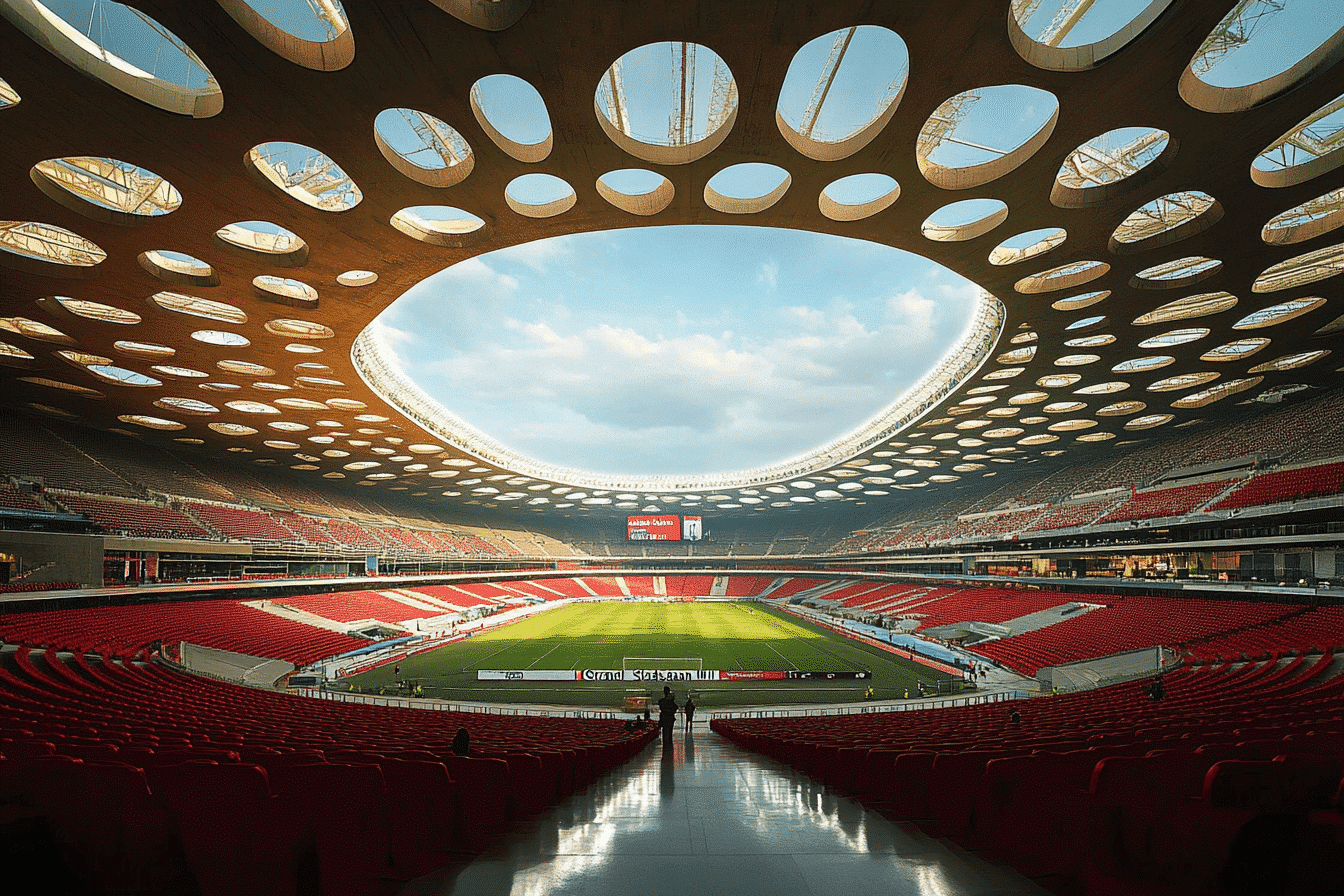The countdown to the 2030 FIFA World Cup has begun, and with it comes the unveiling of the Grand Stade Hassan II, a monumental stadium in Morocco. Designed by Oualolou + Choi and Populous, this stadium aims to be one of the largest in the world, with a seating capacity of 115,000. Situated in El Mansouria, just north of Casablanca, the Grand Stade is set to be a landmark venue for Morocco and football on the global stage.
A Design Rooted in Moroccan Culture
The Grand Stade Hassan II is more than just a massive structure; it celebrates Moroccan culture and heritage. According to Tarik Oualalou, design principal and founding partner at Oualalou + Choi, “The design is deeply rooted in Moroccan culture, with its traditions and contemporary expressions. It is rooted in ancient and primordial figures: the Moussem, the tent, and the garden, as well as the topography and landscapes of Morocco.”
The stadium features an aluminum lattice inspired by the traditional communal tents called “mousse.” This lattice will cover the fans inside the stadium, tiered gardens outside the stands, and a botanical garden on the ground floor. This integration of nature and architecture is a nod to Morocco’s rich landscapes and cultural history.
A World-Class Venue for a Global Event
The Grand Stade Hassan II is tailored to meet FIFA’s requirements for World Cup events. The stadium will be divided into zones, with nearly 30,000 general admission seats at each end. The main section of the stands will be reserved for VIPs, VVIPs, and hospitality boxes. Christopher Lee, managing director at Populous, EMEA, expressed his confidence in the project, stating, “(It) will be a truly iconic, landmark venue for Morocco and for football itself, that will become one of the great stadia of the world.”
Stacking Up Against the World’s Largest Stadiums
With a planned capacity of 115,000, the Grand Stade Hassan II is set to join the ranks of the world’s largest stadiums. It will rival cricket’s Narendra Modi Stadium in India, which holds 132,000 spectators, and the Rungrado 1st of May Stadium in North Korea, which seats approximately 114,000 fans. The Grand Stade’s design team seems to have strategically added 1,000 more seats than the Rungrado, making it a contender for the world’s most significant soccer stadium title.
Morocco’s Journey to the 2030 World Cup
Morocco’s journey to co-hosting the 2030 FIFA World Cup has been long and challenging, with five unsuccessful bids before finally being selected alongside Spain and Portugal. The Grand Stade Hassan II is key to Morocco’s World Cup preparations. Although the final decision on the venue for the 2030 World Cup final is yet to be made, the Grand Stade Hassan II’s compliance with FIFA standards puts it in solid contention.
A Future Icon in the Making
As preparations begin to construct the Grand Stade Hassan II, Morocco is set to make a significant mark on the global football stage. This stadium is not just about size; it’s about showcasing Morocco’s cultural richness and architectural innovation. As Christopher Lee pointed out, this venue could become one of the world’s great stadiums, symbolizing Morocco’s place in football history.
